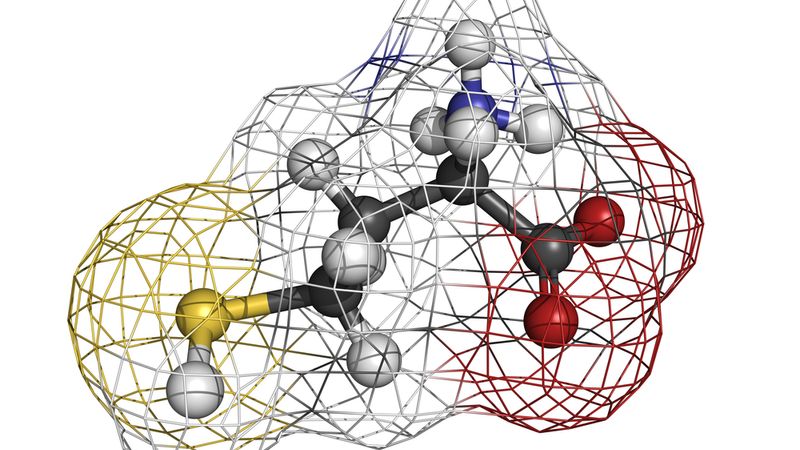

Our Review Process
Our articles undergo extensive medical review by board-certified practitioners to confirm that all factual inferences with respect to medical conditions, symptoms, treatments, and protocols are legitimate, canonical, and adhere to current guidelines and the latest discoveries. Read more.
Our Editorial Team
Shifa Fatima, MSc.
Author
Dr. Apoorva T, MHM.
MEDICAL ADVISOR
Tracking Metabolic Health Biomarkers
Table of Contents
What are Biomarkers?
Biomarkers can be defined as any biological substance or molecule found in the bloodstream or any bodily fluid or cells of a person that signifies the person’s health and present condition with respect to any particular body function or disease. For example, blood pressure and heart rate are an indicator of one’s heart functions, whereas microscopic tissue culture images indicate one’s histological condition.
What is Metabolic Health?
Metabolic health means the absence of any metabolic disease that may impair different metabolic functions of the body. This indicates that the food we eat is used advantageously by our body cells to reduce any risk of heart disease, stroke, diabetes, kidney problems, obesity, fatty liver or any organ or system damage.
What are the Different Biomarkers for Metabolic Health?
1. Blood Glucose Level
The most prevalent metabolic disease is diabetes, which occurs because of the body’s imbalance in glucose metabolism. Glucose is the main energy source for all body cells that circulate from our intestines through blood. It is then taken up from blood to cells with the help of a hormone called insulin, secreted from the pancreas. Excess blood sugar levels mean either insulin secreted is not enough, or the body has developed resistance to insulin. This implies that cells are deprived of proper nutrition, and excess blood sugar hampers different bodily functions, disrupting metabolic health and damaging the organs.
2. Glycemic Index (GI)
The GI is a proportional measure of foods capable of producing spikes in blood glucose levels when consumed. Foods with a GI index of 55 or less are considered low, including whole grains, lentils, vegetables and low–fat dairy products, whereas those with 70 or above are considered high including colas, processed meats, potatoes, white rice and precooked foods. This is because high GI foods are rich in easily digestible carbohydrates that can easily raise the blood glucose levels and are more prone to be overeaten. But low GI foods contain more complex carbohydrates and get digested slowly, giving a feeling of fullness and easily helping in the gradual rise of blood glucose levels.
3. Obesity
Studies show a direct link between all metabolic processes and weight gain. An individual with a body mass index above 25 to 30 kg is considered overweight, and those above 30 are considered obese. Obesity indicates unwanted fat accumulation in the body, which is due to impaired glucose metabolism that strains different body organs, predominantly the heart.
4. Waist Circumference
The width of the waist is a more critical biomarker than body weight as it indicates abdominal obesity. Fats accumulate only in the stomach and abdomen (also called visceral fat) when enough fat is stored in the hips and other body parts, indicating a higher risk of developing type 2 diabetes, heart diseases and hypertension. A waist circumference greater than 35 inches in women and above 40 inches in men is considered high.
5. Gut Health
The gut microflora affects one’s metabolic health by controlling various factors like lowering blood sugar levels, roving heart functions, affection brain functions and immunity by preventing the invading microorganisms from colonising the body. The loss of their balance causes various gastric diseases including irritated bowel syndrome, diarrhoea and colitis.
6. Oxidative Stress
Oxidative stress occurs when reactive oxygen species (ROS) accumulate in the cells in higher amounts than antioxidant levels that can neutralise ROS. Oxidation is necessary for the body to produce immune responses to invading pathogens. But the overproduction of free radicals is detrimental to DNA, proteins and tissue and can induce insulin resistance, high blood pressure, arterial disorders, neurodegenerative problems, premature ageing and autoimmune diseases.
7. Emotional Stress
Stress is a major factor in increasing diabetes and blood pressure. Constant stress leads to cortisol overproduction, directly increasing glucose production in the body. This is because cortisol, the ‘fight and flight’ hormone, keeps the body prepared for any sudden external stimulus by prompting an additional energy source. Chronic stress renders the pancreas immobile, and it gradually loses its ability to sense excessive glucose circulation in the blood, which ultimately leads to insulin resistance.
8. Blood Pressure
High blood pressure and diabetes are proportional to each other as one increases the risk of the other. This is dependent on the ratio of blood LDL:HDL. LDL or low-density lipids carry cholesterol from cells to the heart, leading to the hardening of arteries and plaque formation. HDL or high-density lipids, commonly called ‘good cholesterol,’ carries cholesterol back to the liver for excretion.
9. Triglycerides (TG)
TGs are harmful fats that are produced as an end product of glycogen (fat) metabolism and get stored in the liver for future use. Blood TG levels higher than 150 mL/dL indicate overeating or any other metabolic disorder that leads to the incomplete breakdown of foods. This fatigues the heart due to TG accumulation in arteries, spikes blood sugar levels and causes fatty liver.
10. Heart Rate Variability (HRA)
The heart normally beats 60 to 100 times per minute, but the gaps between each beat vary from 0.9 sec or 1.15 seconds between consecutive beats. This is known as HRA. HRA is an important biomarker of the body’s adaptability to change, mental health and future metabolic problems. A higher HRA indicates better recovery and alertness. A lower HRA is often associated with growing age, diabetes, high blood pressure, heart disorder, depression anxiety and asthma.
11. Sleep
An uninterrupted night’s sleep of 7 hours is ideal for better metabolic health. Sleep helps the body to repair and fine-tune its metabolic system. Two hormones play a crucial role in this affair, namely leptin, which initiates the fulfilment of appetite, and ghrelin, which provokes hunger. Insomnia disrupts their cycle, and nighttime snacking leads to weight gain. Studies show that interrupted sleep decreases melatonin, the sleep hormone, and initiates different metabolic disorders.
12. Foods
Carbohydrates are the main source of the body’s energy, whereas proteins are the building blocks of the body’s cells, and fats are the stored energy batteries. Micronutrients like vitamins are organic and minerals are inorganic substances found in food that act as catalysts in the proper functioning of various systems. A proper balance of all these foods in our daily diet is essential for a healthy life.
Bottomline
Checking biomarkers is an essential part of tracking the metabolic well-being of a person, and it can initiate the person to take proactive steps for further improvement. Regular exercise, a well-balanced diet and proper sleep are the three basic parameters of metabolic health.

References
- https://www.healthline.com/health-news/what-does-it-mean-to-be-metabolically-healthy#How-do-you-improve-your-metabolic-health?
Disclaimer
This website's content is provided only for educational reasons and is not meant to be a replacement for professional medical advice. Due to individual differences, the reader should contact their physician to decide whether the material is applicable to their case.






_1lAR9W.png)
_Z12iaBn.png)
